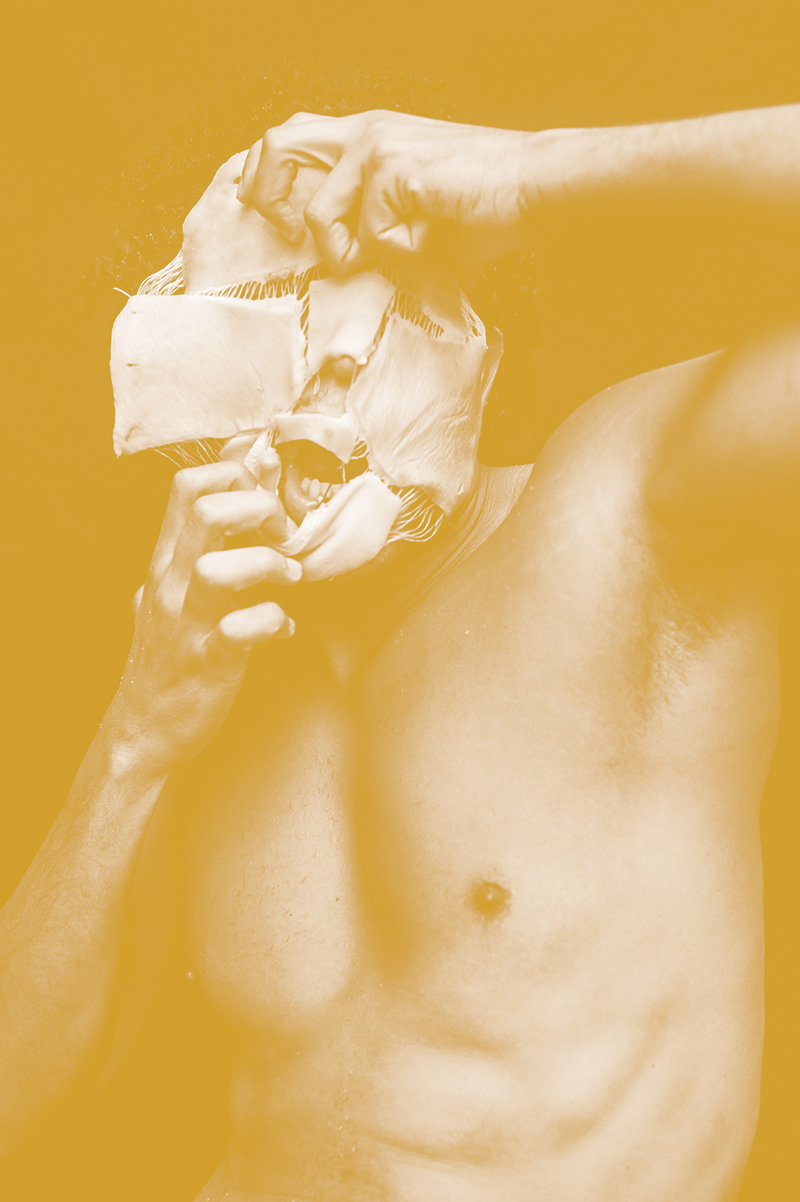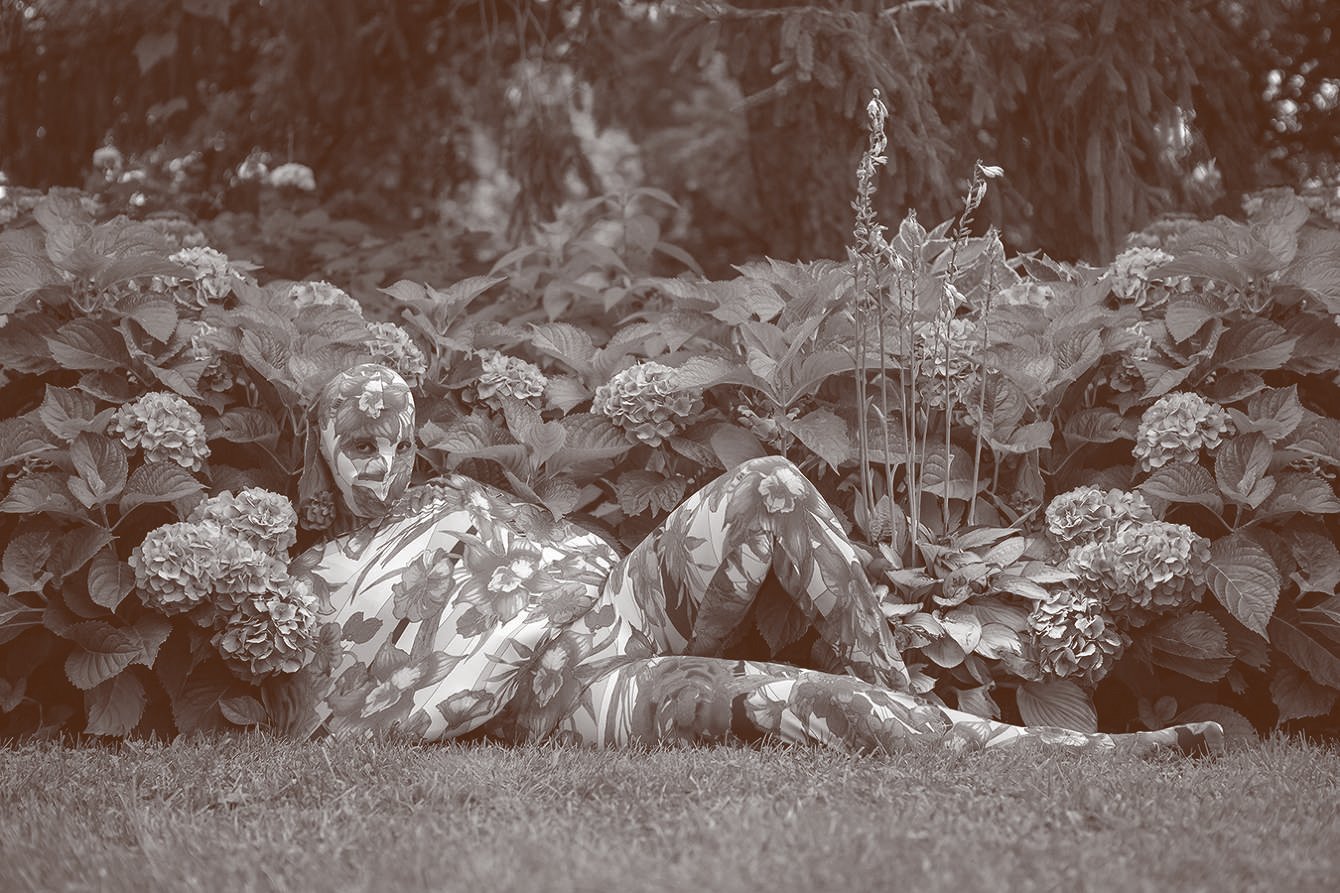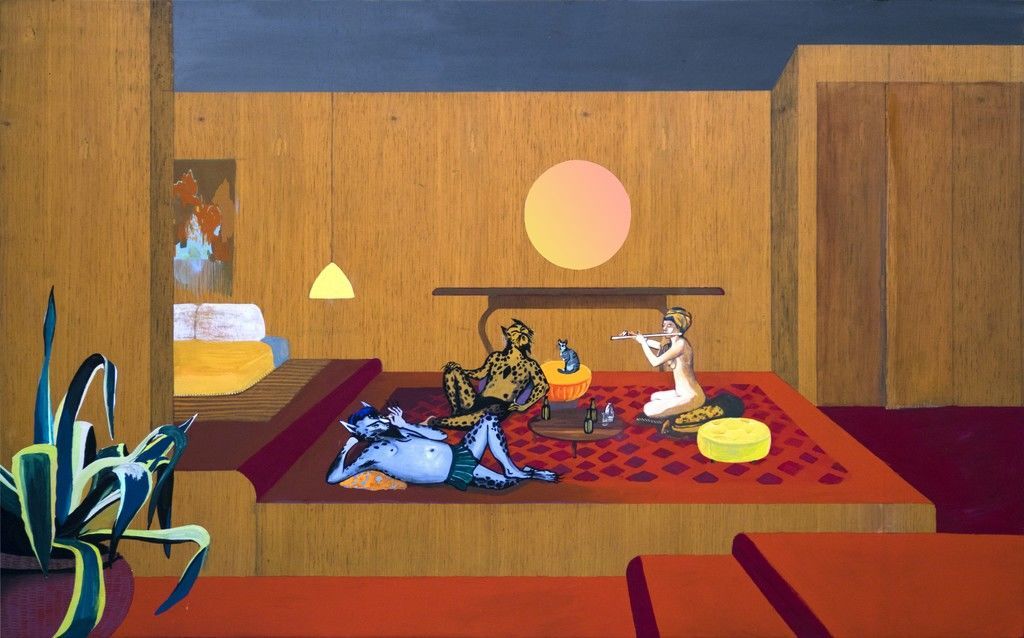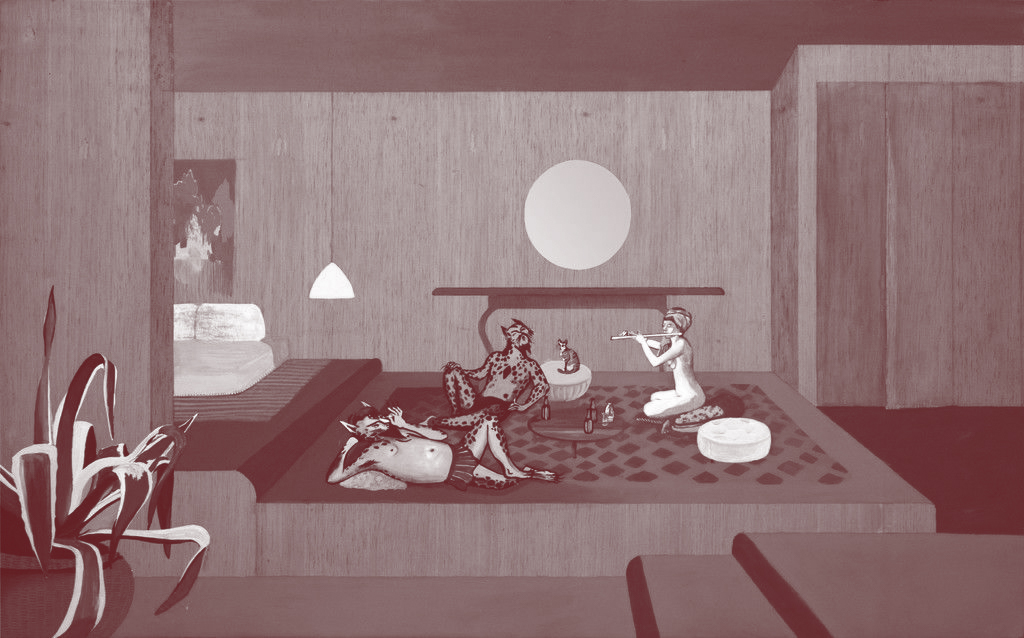
Jose Duran has been a mentor and a source of inspiration to us for many years. Back in 2020, we interviewed him and reflected on his career as a renowned fashion designer. Today, we are honored to speak to him again, this time about his latest body of work and his artistic practice. His works draw inspiration from the opulence of baroque and rococo interiors, constructing scenes of architectural splendor and feminine grace, inviting viewers to immerse themselves in complex narratives. Jose’s paintings are also an ode to the legacy of his dear mother, Elena.
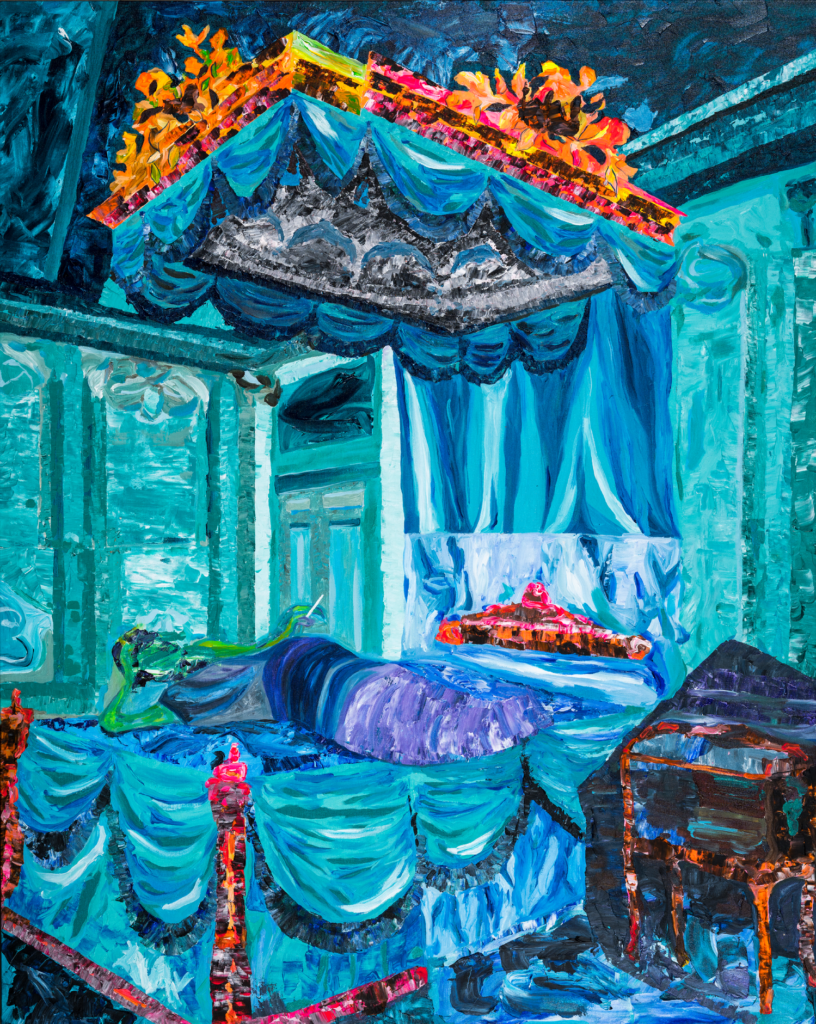
During the beginning of the pandemic, you decided to make a significant shift in your life by delving into painting and pursuing a career as an artist. What motivated or inspired you to make this change?
For a long time, I had wanted to find out whether I could paint or not. That has always been one of my personal questions. I have many friends that are artists, and painting has always greatly appealed to me. I always find myself drawn to it… but I was afraid to find out if I was any good or not, or if I could succeed at it. Then, the pandemic gave me the opportunity to take the time to start practicing and see if I could enter this world. What motivated me was the desire to create, but I didn’t want to create fashion. After spending 3 years in Taiwan, and going through the pandemic… I needed to create but didn’t want to go back to creating clothing again. I had been in the fashion world for many years and wanted to change mediums, so decided to become a painter, and well, here we are!
As a multidisciplinary artist, where do you find inspiration for your artworks? Can you share the sources or experiences that contribute to your creative process?
When I create, whether it is art or fashion, I always look for a subject, and that subject usually leads to another. I am always seeking to create works that are different and of historical significance. My attention has always been drawn to research. I go to the library or investigate on the internet to gather an archive of information that I can reference to create artworks. Investigations are a key part of my creative process.
Congratulations on your debut solo show, “Elena,” at James Fuentes Gallery. Could you provide insight about your new body of work presented in this exhibition?
To give you some context, in 2023, I had a show in Santo Domingo called ‘Duvet.’ I didn’t name it after my mom, who was called Elena. I wanted to save that name for a bigger exhibition, and by chance after the show in Santo Domingo, I was invited to do a solo show here in New York. I wanted to name it after my mom because almost all of my creations are inspired by her or women like her: strong and beautiful.
The exhibition was created with a focus on interiors, specifically in the rococo art style. During this period, European colonizers became wealthy through the exploitation of resources in regions such as Haiti and other colonized islands, contributing to the flourishing of the rococo style. This opulent aesthetic was found in the interiors of castles and palaces, constructed with profits derived from the institution of slavery. It is precisely this historical context that prompted my selection of the rococo era as the thematic backdrop for the interiors showcased in the exhibition. Additionally, there is a series of small paintings that were not presented in this show but were showcased in New Orleans featuring medicinal and poisonous plants that were used by enslaved women, known as curanderas or healers. These women were doctors for the slaves working on the plantation and were highly respected because of their close relationship to the whites – the slave owners. The curanderas were more respected than the European doctors who were present in the colonies at that time.
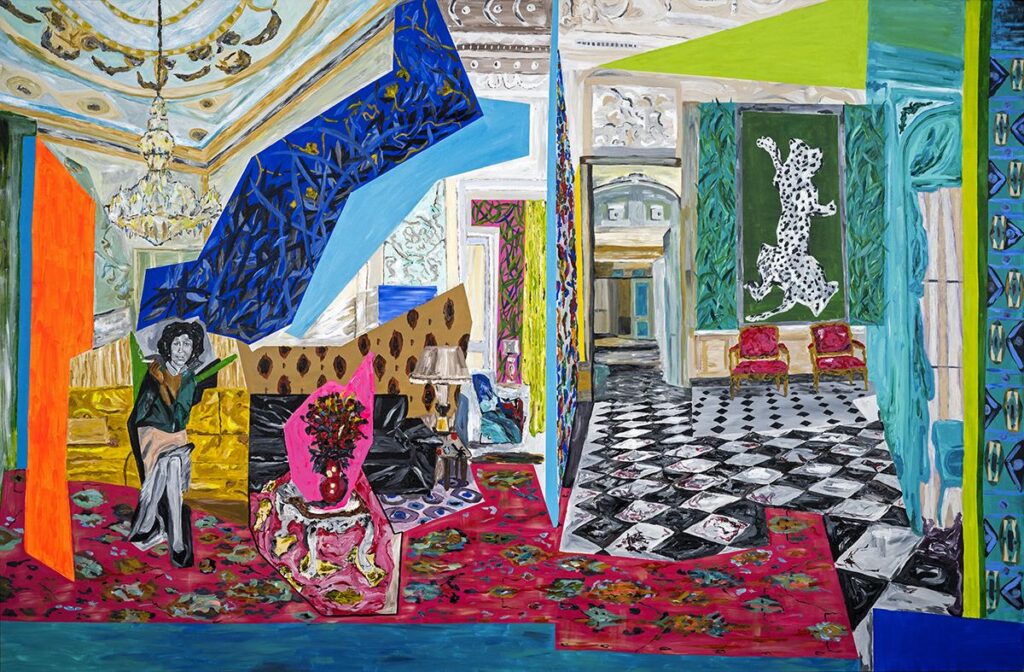
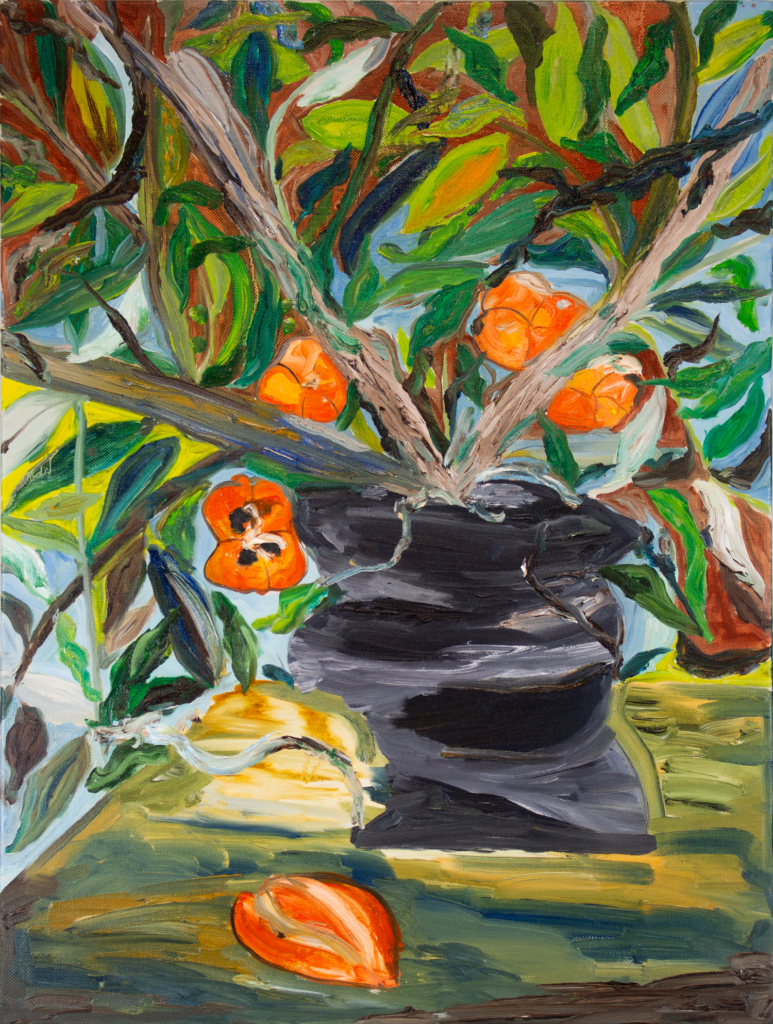
As you’ve explored the art world in recent years, what key takeaways or realizations have influenced your perception of the dynamics within the art community?
Looking back, I realize that the art world opened the doors for me, and I am very grateful for the acceptance and the community I found, because with the little time I have, I have already had 3 shows, and I am currently at the PRATT Forward residency. I believe that fashion gave me the tools to enter this world and made it a little easier because I already knew the textures, colors, and shapes to achieve harmony in painting. I am very happy to change careers… always creating but now in another medium.
You’ve been selected for the Pratt Forward Residency, marking an exciting chapter in your artistic career. What are your aspirations for this residency, and how has the experience been for you so far?
The residency is an amazing place. Every day here, groups of professionals come in, including artists, and lawyers… teaching us what’s necessary to survive and succeed in the art industry. In just the two weeks I’ve been here, what I’ve learned has been immensely helpful and besides, I have gotten to know all the artists who are part of the residency. They are all super creative, and we get along very well.

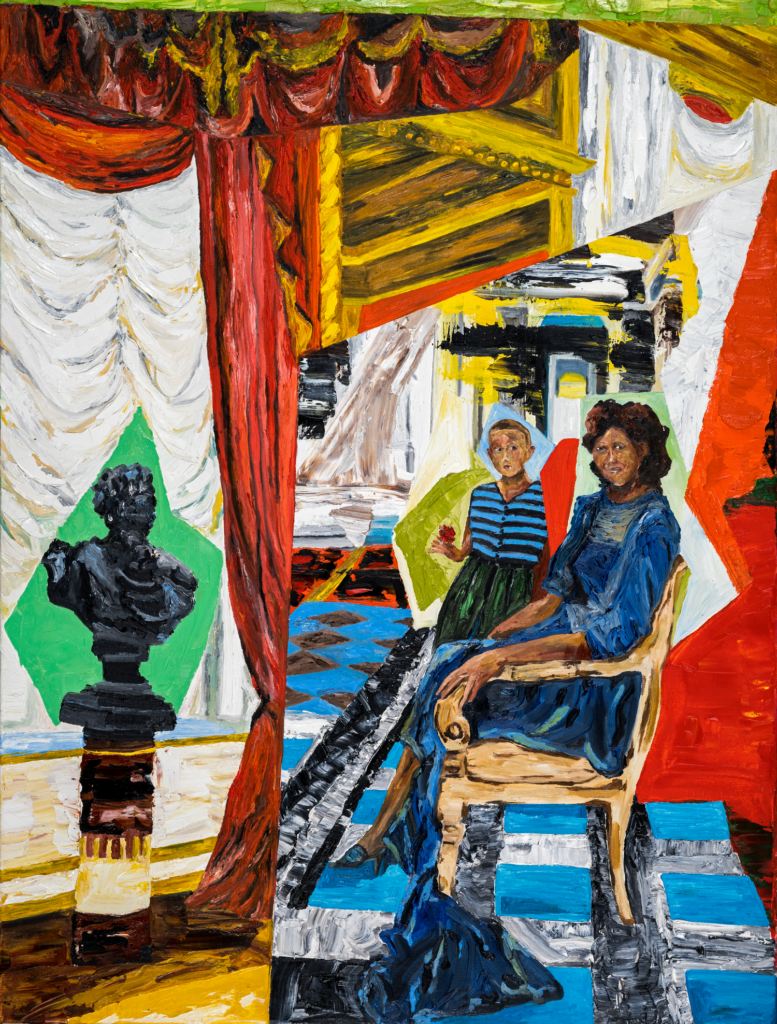
In your latest show, “Elena,” your upbringing is notably present in your work. When you’re painting, do you find yourself reminiscing about the past, honoring it, or perhaps a combination of both? Moreover, has the act of painting provided a form of healing that differs from your experiences in the world of fashion?
Every time I paint, I not only think about what I have experienced, but also about the dreams that my family and I have, like living a better life and being in these luxurious places. For example, I always paint women in comfortable poses, so they are resting in the paintings I make. When I started painting, I began painting my mom and didn’t know that art had the power to alleviate the pain of losing a loved one like my mom. Before painting, I couldn’t see an image of her or listen to her favorite music. It was very difficult for me. Painting has given me the opportunity to see my mom’s image and feel stronger, accepting her loss. Painting these women in lavish interiors has helped me heal a little…


